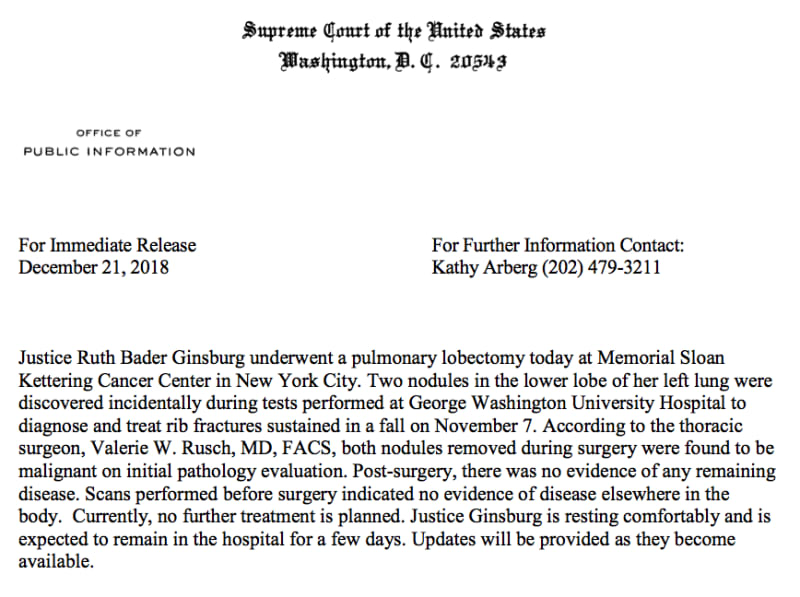Justice Ruth Bader Ginsburg underwent surgery in New York City today to remove two cancerous nodules from her lung, which were determined to be malignant.
Doctors at Memorial Sloan Kettering hospital in New York performed a lobectomy, removing one the five lobes of the lung.
Short of complications in recovery, doctors say prospects look good for a full recovery for Ginsburg, 85.
She hopes to be back on the court for the start of the new term in early January.
The cancer was discovered incidentally after Ginsburg fell, fracturing several ribs in November.
In taking CT-scans of her ribs, doctors noticed an abnormality in one lobe of the lung.
Subsequent biopsies and other initial tests revealed two non-small cell cancerous lesions, with no lymph-node involvement detectable.

Dr. Douglas Mathisen, chairman of thoracic surgery at Massachusetts General Hospital, said that recovery from such an operation typically ranges from two to four days in the hospital, with the patient able to go home, do desk work and make calls, within a week. That assumes that the operation goes smoothly and there are no complications.
Mathisen said that “these days we are seeing more and more patients in their 70s and 80s make relatively quick recoveries, because we are detecting so many more lung cancers at early stages” when treatment is far more effective and successful.
Removal of a lobe is considered “the gold standard” in treatment, and while it means a loss of 15 to 20 percent of the lung, it “can recover,” he said, with the other four lobes taking over some of the lost function.
Mathisen and other thoracic surgeons said Justice Ginsburg’s prognosis ultimately will depend on the pathology findings, which will not be available until days after the surgery.
If there is no lymph node involvement, surgeons said the prognosis for being cancer-free at five years out is 80 percent.
Lymph-node involvement would drop those odds down to 50 to 55 percent, Mathisen said.
Dr. Cameron Wright, also an Massachusetts General thoracic surgeon and Harvard Medical School professor of surgery, put the odds lower at 40 percent if there is lymph-node involvement.
